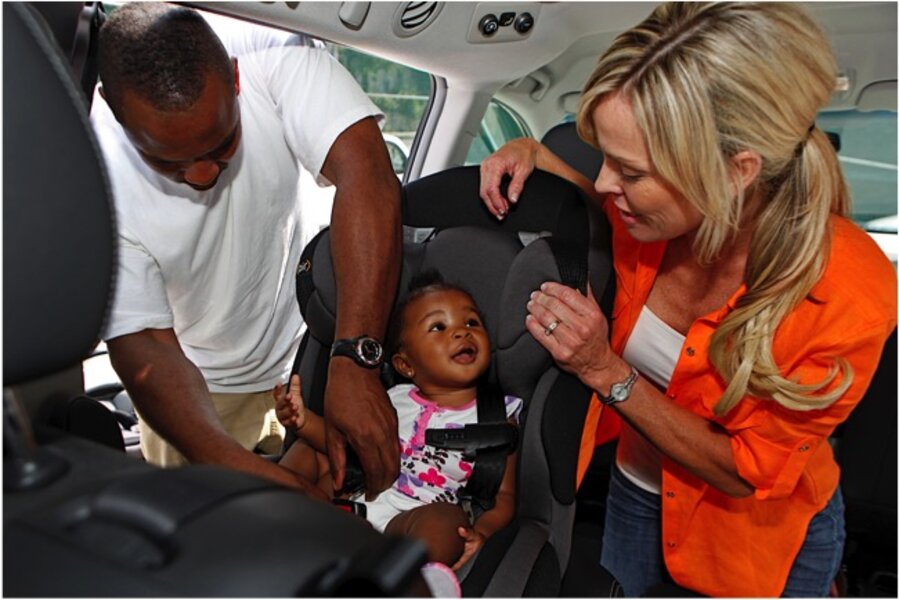Why must children use car seats until age 8 in Oklahoma?
Loading...
The youngest of Elizabeth Hale's six children was very ready to stop riding in his booster seat when he turned 8, especially when he saw older friends graduate to a seat belt. But she says the booster seat kept him safer and was glad California law backed her up.
Oklahoma will join California and other states in enforcing stricter car seat laws, as more states are following current safety recommendations to increase the age limit for children using booster seats. Starting Nov. 1, Oklahoma drivers can be pulled over and ticketed if police see children under age 8 out of a car seat or under age 2 in a forward-facing seat.
About half the states have laws to keep children under age 8 in some kind of car seat, according to the Governor's Highway Safety Association (GHSA), a nonprofit council on highway safety with representatives from all 50 states and US territories. Fines for violations range from $10 to $500, depending on the state. Some states also use driver's license points as an additional penalty for noncompliance.
GHSA spokesperson Kara Macek says that there is a trend toward states strengthening laws that are designed to make children safer on the road. She said child safety professionals have been advocating for such changes following research from the American Academy of Pediatrics and other organizations.
For example, the Center for Disease Control and Prevention reports that one study found that, in one year, more than 618,000 children ages 0-12 rode in vehicles without a child safety seat or booster seat or a seat belt at least some of the time. The CDC also found that of the children ages 12 years and younger who died in a crash in 2013, 38 percent were not buckled up.
Ms. Hale says that if safety specialists suggest children remain in a booster seat until age 8, who is she to argue. The law pushed the age back from 4 years old to 6, and then to 8, while her children were using car seats.
"When it comes right down to it, if it is really that important that they are making a law about it, then I would follow it," she says. "By age 8 I think it's definitely appropriate for (children) to be out of (a car seat)."
Only two states today don't require booster seats: Florida and South Dakota.
Oklahoma is one of only three states to require that children younger than 2 years stay in a rear-facing car seat, joining California and New Jersey, Ms. Macek says.
Hale is less certain about the rear-facing law that will start in California in 2017, noting that she moved her children into forward-facing car seats after age 1 because they seemed happier that way.
"Really the safety is more important than whether the kid can look out the window, but if it's a matter of them sitting with their legs bent then that's a valid issue," she says.
Pediatrician and car-seat advocate Alisa Baer told Parenting magazine that children have more flexible joints and will not be harmed even if they look cramped in a rear-facing car seat, and the safety benefits are worth the risk:
Ever wonder why flight attendants ride rear-facing? You guessed it—because rear-facing is the best way to take an impact. With more than 30 years of data from Sweden, where kids ride rear-facing until age 4 or beyond, showing the benefits of rear-facing over forward-facing for toddlers and preschoolers, I can assure you that the only changes in the recommendations will be to increase the time kids should ride rear-facing, not decrease it.








